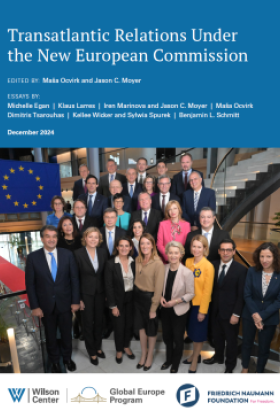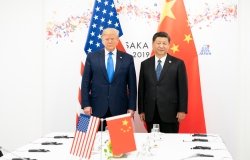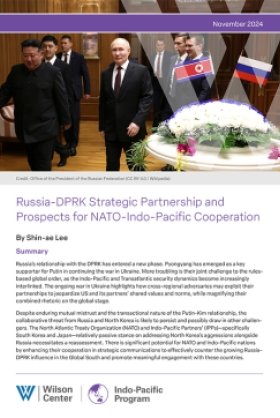Edging toward an Endgame in Afghanistan?
On this month’s ten-year anniversary of U.S. military engagement in Afghanistan, Michael Kugelman of the Asia Program offers an analysis of the conflicting forces that are challenging the regional peace process and discusses changes in U.S. policy approaches toward Afghanistan and Pakistan.
During a recent meeting in Kabul, U.S. Secretary of State Hillary Clinton and Afghan President Hamid Karzai shared a laugh over U.S. Republican presidential contender Herman Cain’s lack of foreign policy experience. It was a rare moment of mirth in a country where ground realities seemingly grow grimmer by the day.
After ten years of war—the longest in America’s history—the stabilization of Afghanistan remains a major work in process. While U.S.-led coalition forces have succeeded in overthrowing the Taliban-led government and uprooting al-Qaeda from its long-time sanctuary, violence continues to afflict the long-suffering nation. Tactical victories have been won against Taliban insurgents in southern Afghanistan, yet militant bastions proliferate across the East, and unrest convulses the previously peaceful North. The war has now killed nearly 3,000 NATO troops and more than 11,000 Afghan civilians.
Determined to remove its combat troops by the end of 2014, Washington is eager to stabilize the country as quickly as possible—and is increasingly telegraphing a desire to seek this outcome off the battlefield. In Pakistan in October, Clinton signaled a shift in U.S. policy when she called for Islamabad to help bring Pakistan-based Afghan militants (specifically the Afghan Taliban and the Haqqani network) to the negotiating table. Previously, the Obama administration had demanded that Pakistan wage military operations against these groups, which launch attacks on U.S. forces in eastern Afghanistan from their sanctuaries in Pakistan’s tribal belt.
This policy shift likely reflects two grudging American acknowledgments. One is the impossibility of total military success in Afghanistan in such a compressed timeframe. The other is the fact that Pakistan’s interests do not converge with America’s. Elements of Pakistan’s security services maintain links with the Afghan Taliban and Haqqani network, regarding them as guarantors of Pakistani influence in Afghanistan. Pakistan has little desire to alienate such powerful proxies (much less attack them), which would jeopardize such influence in a post-U.S. Afghanistan.
Additionally, the Pakistanis undoubtedly recall what happened the last time they abandoned proxies. When, following the September 11 attacks, Islamabad renounced ties with the Tehrik-i-Taliban (the Pakistani Taliban), the organization declared a war on the Pakistani government that spawned scores of suicide attacks and thousands of deaths and, for a brief period, led to Taliban control of the Swat region, a picturesque honeymoon destination in the mountains of northern Pakistan.
Holding Afghan peace talks poses its own set of challenges. One is determining who deserves a seat at the table. The United States insists that a peace process be open only to those militants who support the Afghan constitution and abjure violence. These conditions, however, will be problematic with regards to those militants who wish to fight and talk simultaneously (a strategy favored by Washington as well; recall that U.S. officials held secret discussions with Haqqani members this summer in the Persian Gulf even as American drones targeted them in Pakistan).
Equally delicate is the task of accommodating Afghanistan’s non-Pashtun factions. Uzbek, Tajik, and Hazara minorities comprise nearly half of the country’s population, and they make up the Northern Alliance movement that fought the Pashtun-dominated Taliban in the 1990s. India and the United States want them aboard, but Pakistan, which is home to more Pashtuns than Afghanistan, is wary of them, given the Northern Alliance’s close ties to India.
Talk of endgame scenarios must also address another prickly matter: the role of Afghanistan's neighbors. Pakistan insists that India’s presence in Afghanistan be minimal, yet this is a position that is at odds with both Delhi and Kabul, which several weeks ago concluded a strategic accord that enables Indian troops to train their Afghan counterparts. Afghanistan is eager to consummate a similar agreement with the United States that would allow troops to remain (mainly for training purposes) after 2014. Washington, though supportive, is hedging while it decides how to strike a balance between enshrining its long-term commitment to Afghanistan and honoring the wishes of growing numbers of Americans clamoring for a full withdrawal.
While the contours of a post-2014 Afghanistan are far from taking shape, is it clear that they will have implications across the globe—from historic Taliban nemesis Iran and Pakistani benefactor Saudi Arabia to natural resource-craving China. No wonder countries across the broader South Asia region and beyond are already preparing for the coming endgame. Islamabad, desperately seeking more regional allies, is pursing closer ties with Moscow and Tehran. Riyadh, an occasional host for informal talks between Kabul and Taliban factions, has officially signed on to reconciliation. And Washington is working on a new economic integration plan—a “New Silk Road”—that would link Afghanistan to markets in the Caucuses and across the Subcontinent via pipelines, rail lines, and highways.
To be sure, burgeoning momentum for a political solution does not mean that military options are off the table. Washington still expects Islamabad to take decisive action against Afghan extremists on Pakistani soil who refuse to renounce terrorism. Signaling its acceptance of Pakistan’s decision not to undertake a full-fledged military offensive in North Waziristan (home to the Haqqanis’ Pakistan base), Washington has now announced that Pakistan’s army may go after militants via covert means. Yet this presupposes a level of intelligence cooperation between the United States and Pakistan that may not exist.
Similarly, Islamabad has demanded that international and Afghan forces do more to root out Pakistani Taliban sanctuaries in eastern Afghanistan, along the porous border with Pakistan. (These militants were flushed out of Pakistan by army operations several years back.) Just as Pakistan-based fighters are staging raids on Afghanistan, Islamabad argues, Afghanistan-based forces are launching cross-border attacks into Pakistan, including one this summer in which 200 militants entered the tribal area of Bajaur from Kunar Province and fought Pakistani soldiers for several days.
Among the Afghanistan-based Pakistani Taliban warriors is Maulvi Fazlullah, who ruled Swat until the Army drove him out in 2009. In recent days Fazlullah has vowed to return to Pakistan to wage war anew—a troubling prospect for Islamabad because Fazlullah, unlike other Pakistani Taliban leaders, has expressed little interest in peace talks.
Moreover, with Afghanistan as volatile as it is, enthusiasm about peace today can easily be shattered tomorrow. Support for reconciliation was budding earlier this year, until a series of high-level assassinations that culminated with the September slaying of Burhanuddin Rabbani, the former Afghan president who headed the High Peace Council. In the days following Rabbani’s death, many observers suggested that reconciliation was no longer realistic. The resignation and pessimism spawned by the assassination campaign will continue to linger in the minds of many.
Nevertheless, if there has ever been a time to be hopeful about reconciliation prospects, it is now. The international community will soon host two major conferences—one in Istanbul in November, the other in Bonn in December—that will discuss a range of issues, including Afghan security, regional economic cooperation, and reconciliation. These forums should provide ample opportunities to lay the groundwork for a comprehensive, inclusive, and lasting political solution.
Additionally, Pakistan-India ties are showing signs of improvement for the first time since the Mumbai terror attacks of 2008. If relations between these two nemeses continue to thaw, leading to less mutual suspicion about each other’s intentions in Afghanistan, then the road to reconciliation will become considerably less bumpy.
Together, these developments can bring us closer to the day when jokes about a U.S. presidential contender need not be the sole spark for laughter in Afghanistan.
Michael Kugelman is the Wilson Center’s South Asia associate. michael.kugelman@wilsoncenter.org
About the Author


Indo-Pacific Program
The Indo-Pacific Program promotes policy debate and intellectual discussions on US interests in the Asia-Pacific as well as political, economic, security, and social issues relating to the world’s most populous and economically dynamic region. Read more










